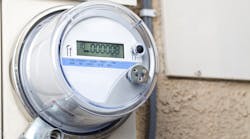No matter how well-informed or well-intentioned, people need strong motivations to support behavior change. Among those motivators one can list a few strong ones: competitive forces; positive recognition by others; monetary compensation; confidence that their actions will make a difference.
One more to list: feedback that changes made are indeed having an impact. This feedback must be easy and trustworthy. As such, most successful approaches provide more frequent feedback, as well as feedback on specific behaviors.
As the smart grid unfolds, various methods to provide energy, cost, and environmental information are beginning to emerge. A specific class of standalone devices has been used extensively and is referred to as the in-home display (IHD). Typically, IHDs present basic information, such as real-time and projected hourly electricity cost and electricity consumption (kilowatt hour). Some can display additional information, such as electricity cost and consumption over the last 24 hours, the current month (and/or prior month) consumption and cost, projected usage, monthly peak demand, greenhouse gas emissions, and outdoor temperature. A similar approach is a component of a prepayment system, also known as a pay-as-you-go system, since these also have a display.
Grid-ready appliances do not require truck rolls to retrofit with remote communications and control capabilities. Grid-ready appliances and devices, which are often referred to as "DR-ready," are manufactured with demand response (DR) capabilities already built in. The universal entry of grid-ready devices into the marketplace, which is anticipated by some on the EAC to take shape in the next several years, will lead to ubiquitous DR capability.
Plug-in electric vehicles (PEVs) are defined as any hybrid vehicle with the ability to recharge its batteries from the grid, providing some or all of its driving through electric-only means. Almost all of the major automotive manufacturers have announced demonstration or production programs in the 2010 to 2014 timeframe, and their announced vehicles feature all-electric, plug-in hybrid electric vehicles (EVs) and extended-range EV configurations. Most notable for their early introductions among these are the global production vehicles from Toyota.
If integrated with grid operations, flexibility in the timing of charging of EVs can help provide ancillary services, moderate variability in net demand, and manage system and circuit peak demands. These benefits can be realized by impacting whether or not the EV is charging at any specific time without power flowing from the vehicle to the grid.
All applications which may provide reverse flow power capability such as vehicle-to-grid (V2G) are unproven. Their impact on battery durability, utility/automotive/consumer acceptance, and economics are yet to be demonstrated. In addition, it is uncertain what services they will enable and whether policies and incentives will be needed to bring them to reality. V2G, therefore, remains a research and development (R&D) agenda item of several automotive manufacturers, Electric Power Research Institute (EPRI), some ISOs/RTOs, and several R&D institutions. It is, however, too early to predict the direction and magnitude of this technology’s installed base in the near future.
Today, a substantial number of the conditioned and institutional buildings have some form of energy management and control systems installed. Automated DR (ADR) can be accomplished by communicating to advanced building energy management systems using an internet-communicated signal or some other form of direct link.
Legacy systems deployed today lack this capability. Open-ADR involves a machine-to-machine communication standard that provides electronic, internet-based price and reliability signals linked directly to the end-use control systems or related building and automated control systems. The building automation system is preprogrammed to reduce load according to the messages it receives, and it may also provide real-time energy consumption information back to the utility or service provider.
Employing Open-ADR presumes the building has an advanced EMS system. There are two cost components that enable the building to respond to DR signals. The first is to enable the building’s EMS to receive the DR signals. The second and perhaps largest cost component is the programming of load control strategies in the EMS.


